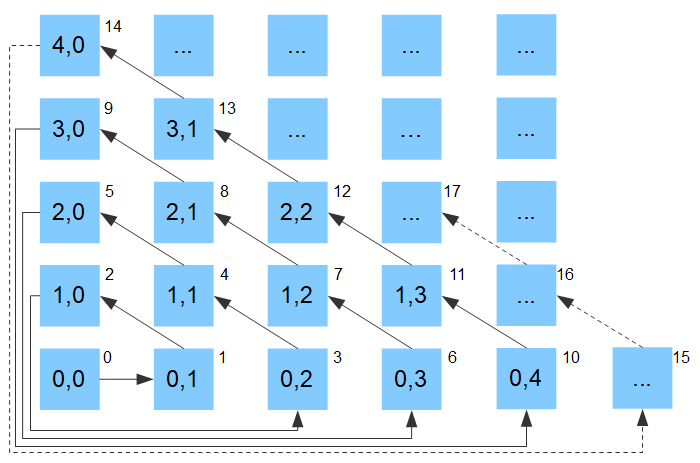(related to Part: Cardinal Numbers)
It is intuitively clear that it is possible to compare the cardinals of finite sets. For instance, a subset of a finite set is again finite. In particular a proper subset $S$ of a set $X$ with $|X|=|n|$ for some natural number $n\in\mathbb N$ will have a smaller cardinality $|S|<|n|.$ This relation holds for instance for the sets $$X=\{1,2,3,4,5,6,7,8,9,10\},\quad S=\{2,4,6,8,10\}.$$
In the course of his research, Georg Cantor (1845 - 1918) realized that it is also possible to compare the cardinal numbers of infinite sets. He was very surprised when he discovered that a proper subset $S$ of an infinite set can have the same cardinality, in contrary to the finite case. All that is needed is to find a bijective function between the two.
For instance, take the set $S\subset\mathbb N$ of all even natural numbers. It has the same cardinality as $\mathbb N,$ i.e. $|\mathbb N|=|S|,$ although $S\subset \mathbb N.$ A bijective function is indicated by the following table:
$$\begin{array} {rcl} 1&\leftrightarrow&2\\ 2&\leftrightarrow&4\\ &\vdots\\ n&\leftrightarrow&2n\\ &\vdots\\ \end{array}$$
Cantor then found a bijective function between the (infinite) set of natural numbers $\mathbb N$ and the Cartesian product $\mathbb N\times \mathbb N.$ The function shown below does the trick:

This function $f:\mathbb N\times \mathbb N\to\mathbb N$ maps every ordered pair of natural numbers $(x,y)$ uniquely to the single natural number $f((x,y))$ and this shows that $\mathbb N^2$ and $\mathbb N$ have the same cardinalities. But in addition to this, it is even possible to compose the function $f$ with itself requiring $f(f(x,y),z).$ This leads to the fascinating result $$|\mathbb N|=|\mathbb N^n|,\quad n\in \mathbb N$$ i.e. that the natural numbers $\mathbb N$ and the multidimensional number space $\mathbb N^n$ have still the same cardinalities, no matter how big we choose the dimension $n.$
Explanations: 1